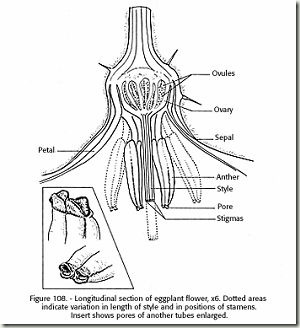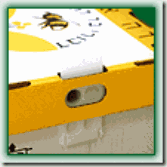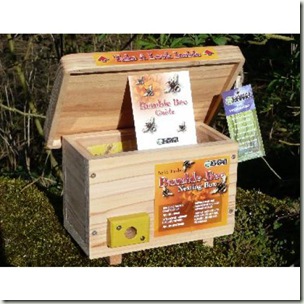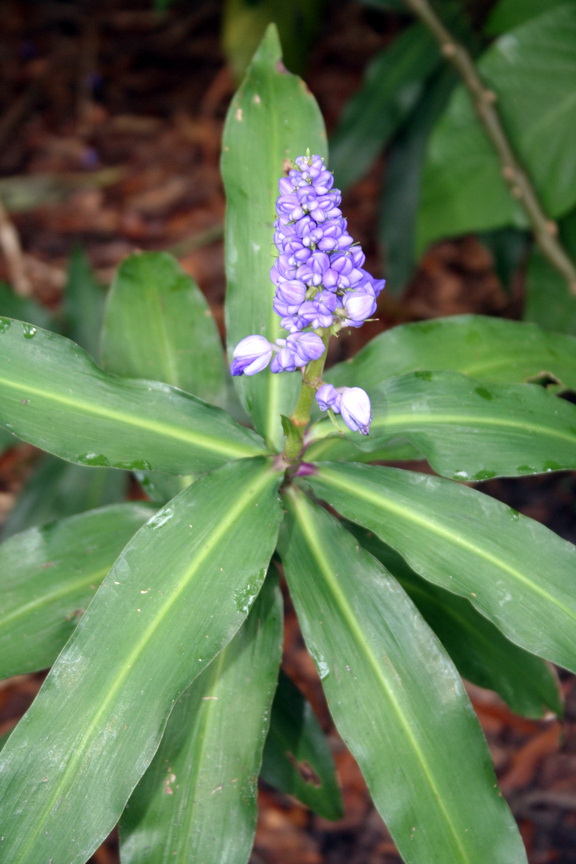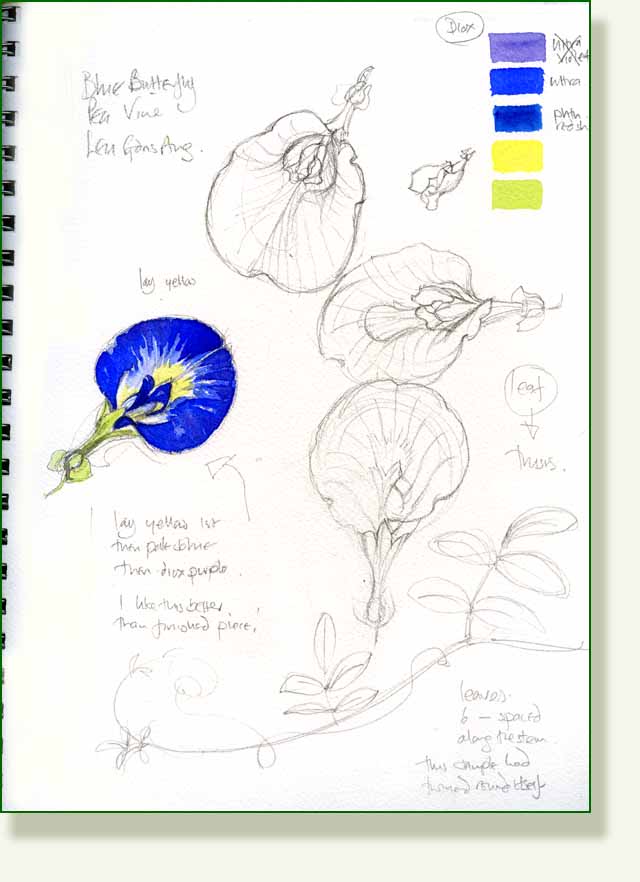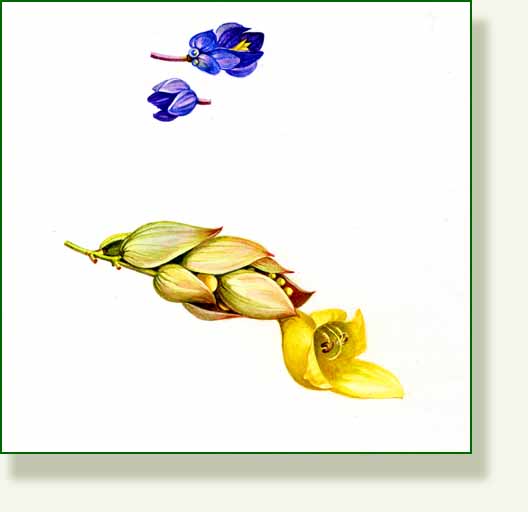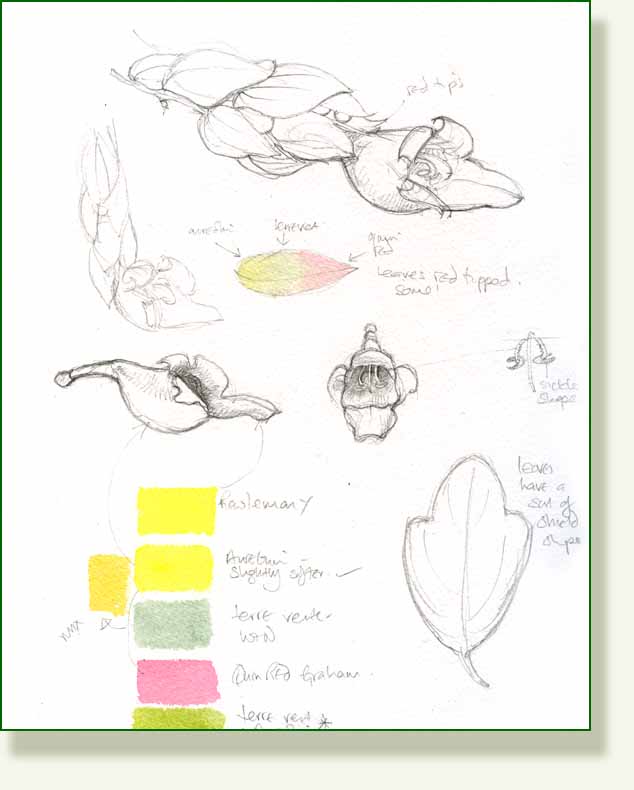The more I read about bees, the more the little bits of information begin to make sense of things I have casually observed over the years. For example, I used to think that when the Bumble Bee changed it tune from low drowsy hum to high pitched buzz it was a sign of extreme irritation or frustration.
Now I know better.
There might actually be a bit of frustration involved because what the bee is doing is shaking the anther of the flower to release the pollen inside.. clever thing!
I am sure that keen naturalists know this already but, while I understood that Bumble Bees were important pollinators I had no idea they were used on such a large scale by commercial growers.
How it works In some flowers, particularly of the Solanum family, i.e. eggplants, potato, tomato, and Vaccinium, i.e. cranberry, blueberry, bilberry and huckleberry, the pollen is contained in tube shaped anthers, with only a small aperture at the tip for the pollen to escape, rather like a salt or pepper pot.
Eggplant diagram from Beeculture.com’s pollination guide here.
While a little pollen can be dispersed by wind or the action of insects bumping into the flowers, the Bumble Bee has a better method. It grasps the anther and shakes it. Here from a very good short article, from BayNature.org, Sue Rosenthal explains
“Bumblebees, … actively collect and eat not just nectar but also protein-rich pollen. And a bumblebee can cause a flower to discharge a visible cloud of pollen through buzz pollination.
The bumblebee grasps the flower with its legs or mouthparts and vibrates its flight muscles very rapidly without moving its wings. This vibration shakes electrostatically charged pollen out of the anthers, and the pollen is attracted to the bumblebee’s oppositely charged body hairs.
The bumblebee later grooms the pollen from its body into pollen-carrying structures on its back legs for transport to its nest”
Read more here. Susan also goes on to tell us that the
“Buzz-pollinating bumblebees make a distinctive, middle-C buzz”… and that they also “use the energy of buzz pollination for other purposes, for example, compacting soil in their underground burrows (bumblebees don’t build hives like honeybees) or moving a pebble or other obstacle.”
They are so smart!
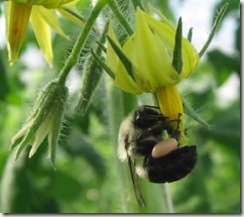
Great photo of Bumble bee (I think B impatiens) firmly grasping a tomato flower from Canadian tomato growers Gipaanda Greenhouses here. A company who seems to care about every aspect of production.
Here is a nice piece of film of Bumble Bees in action on a blueberry crop from KoppertBiological here.
It demonstrates perfectly the change in pitch as the Bumble Bee (I think B.terrestris) vibrates the flower.
While other native bees also use buzz pollination, Honeybees don’t, and it is estimated that 8% of the flowers of the world are primarily pollinated using buzz pollination.
Growers have tried alternatives.. such as electric toothbrushes or the commercial “Electric Bee” but the humble bumble is far more effective and cheaper.
Like Koppert above, the award winning Bio-bee.com company from Israel, here is one of growing number of companies who supply Bumble Bees for growers.
They have a very nice site explaining all about the pollination process and will provide you with a box of big bouncing Earth Bumble Bees ( Bombus terrestris), ready and eager to pollinate your tomatoes, peppers, strawberries, eggplants, courgettes, cherries, avocados and blueberries.
The bee boxes are fully equipped with sugar water and nectar and insulation.
You can of course encourage your own little colony by providing them with boxes, like this ready made one from Ethical Superstore UK here.
or, for other ideas for nesting boxes from the Bumble Bee Conservation site’s “Join Our Nest Box Trial” here..
Of course after all that hard work, the Bumble Bees may just prefer that old coat pocket, so you could just console yourself with some of these….
Gorgeous smiling chocolate Bumble Bees… Ahhhh…..from The Chocolate Store here.

